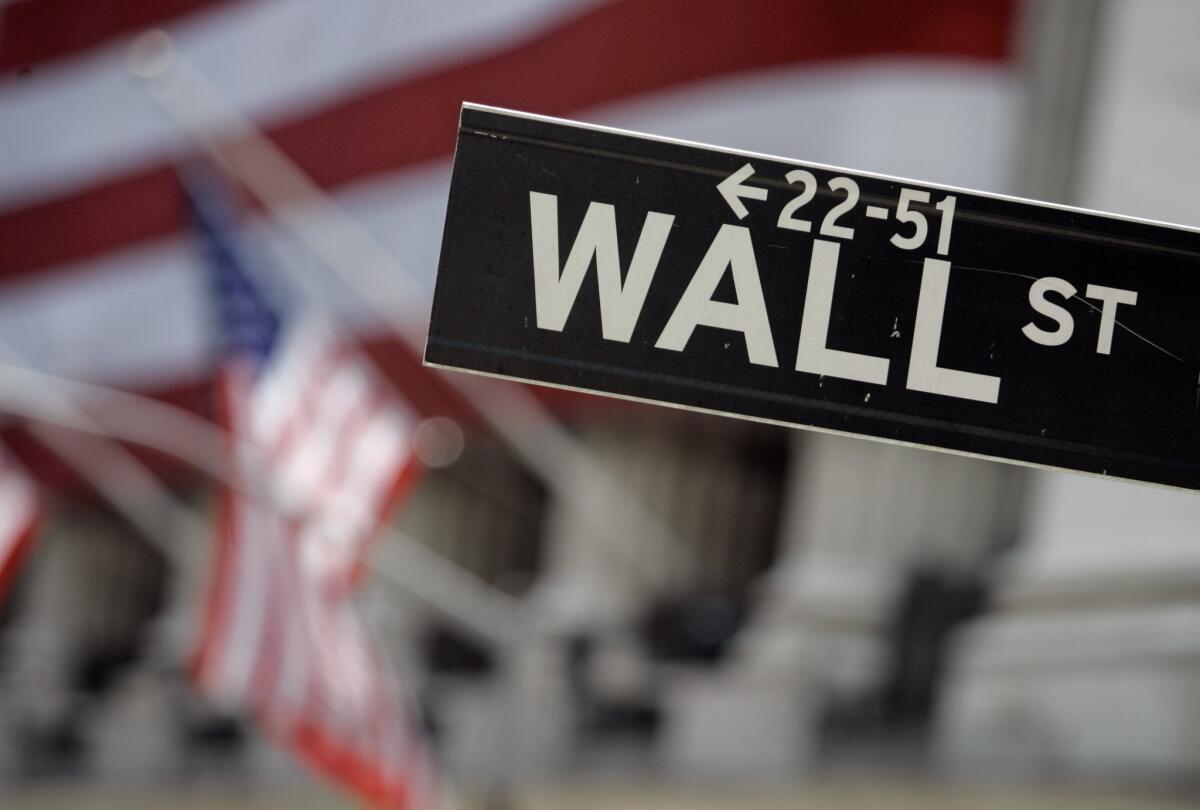Wall Street ticks up; S&P 500 nets third straight weekly gain

- Share via
Wall Street ticked higher Friday to close out its third straight winning week, one punctuated by hopes that the economy can continue to steady itself despite the COVID-19 pandemic.
The S&P 500 rose 9.16 points, or 0.3%, to 3,224.73 after yet another day of wobbly trading. The Dow Jones Industrial Average slipped 62.76 points, or 0.2%, to 26,671.95, while the Nasdaq composite added 29.36 points, or 0.3%, to 10,503.19. Most stocks rose across the market.
Trading was muted across other markets, too, with stocks overseas, oil and gold making relatively modest moves. Even China’s market held steady: Stocks in Shanghai inched up 0.1% following a run earlier this month where their average daily move was more than 2%.
Friday’s meandering trading came after reports showed a strengthening in U.S. home building activity but also a weakening in consumer sentiment. They’re the latest in a stream of data showing how uncertain the path is for the economy, as the continuing rise in coronavirus counts threatens to undo improvements that seemed to have taken root in the economy.
Amid the uncertainty, though, nearly 3 in 5 stocks rose within the S&P 500.
BlackRock rose 3.7% for one of the larger gains in the S&P 500 after the investment firm reported a stronger profit for the spring than analysts expected. J.B. Hunt Transport Services also reported a bigger profit than Wall Street forecast, and it rose 3.2%.
This week marked the start of earnings reporting season, and the nation’s biggest banks were some of the early headliners. Several warned they had to set aside billions of dollars to cover loans potentially going bad due to the recession. But investment banks also said their trading operations brought in more revenue than analysts had expected.
On the losing end Friday was Netflix, which dropped 6.5% for the largest loss in the S&P 500. Its forecast for new subscribers during the summer fell short of Wall Street’s expectations. It’s a relatively rare step down for Netflix, which is still up a bit more than 50% for 2020 so far.
This week has seen some weakness for big tech-oriented stocks generally, after they had glided through most of the pandemic. Investors have continued to add to bets that Apple, Microsoft and other giants can keep growing almost regardless of the economy. The big run has critics saying they’ve become too expensive, even after accounting for the huge profits that they produce.
Microsoft slipped 0.5% Friday, while Apple dipped 0.2%. The declines helped bring the loss for S&P 500 tech stocks for this week to 1.2%.
The overall S&P 500 index gained 1.2% for the week. It’s rallied back to within 4.8% of its record set in February and is back to where it was in early June.
Pushing stocks up recently have been improvements in hiring, retail sales and other parts of the economy, along with rising hopes for a COVID-19 vaccine. Underlying it all is massive aid for the economy and the promise of nearly zero interest rates from the Federal Reserve.
But pulling stocks down at the same time has been the relentless rise of coronavirus counts across much of the country.
The yield on the 10-year Treasury held steady at 0.61%.
In the commodities markets, gold for delivery in August rose $9.70 to settle at $1810.00 per ounce. A barrel of U.S oil for August delivery slipped 16 cents to settle at $40.59. Brent crude, the international standard, fell 23 cents to $43.14 a barrel.
In Europe, Germany’s DAX returned 0.3%, and France’s CAC 40 slipped 0.3%. The FTSE 100 in London added 0.6%.
In Asia, Japan’s Nikkei 225 slipped 0.3%, South Korea’s Kospi added 0.8% and the Hang Seng in Hong Kong rose 0.5%.
More to Read
Inside the business of entertainment
The Wide Shot brings you news, analysis and insights on everything from streaming wars to production — and what it all means for the future.
You may occasionally receive promotional content from the Los Angeles Times.










